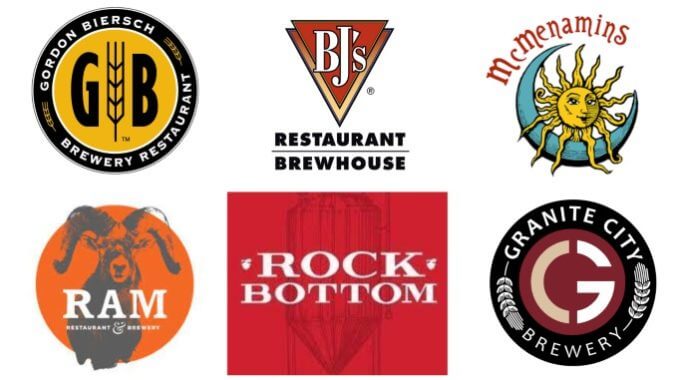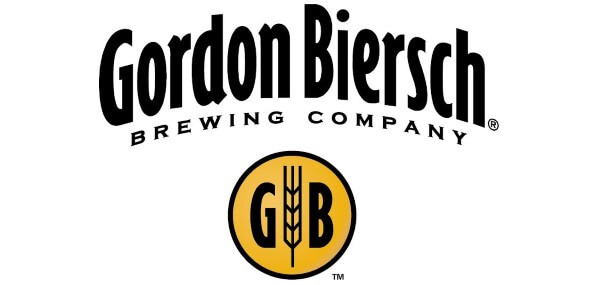
Is there any other corner of the craft beer world that has managed to remain frozen in time quite like the old school, chain brewpubs of the 1990s and early 2000s? Granted, some cities are blessed with wonderful independent brewpubs that are just as eager to innovate and evolve as any production brewery. But for many nascent craft beer drinkers, it was the big chains—the likes of Rock Bottom, Gordon Biersch, Iron Hill, BJ’s Restaurant & Brewhouse, Granite City, Ram Restaurant & Brewery, or McMenamins—that entirely defined the concept of the “American brewpub” to begin with. In the 1990s, these places were often bastions of beer culture, islands of eclectic choice in a sea of casual restaurants that were entirely ignoring the growing craft beer industry.
But in an era when nearly every restaurant and bar now finds itself with at least a moderately sized craft beer selection, where does that leave a brewpub model that has rarely changed in any substantial way in the last 30 years? Many of these chains have become antiquated, living relics of an earlier era in the American craft beer experience—nostalgic to some, but increasingly ignored by the customers who may have patronized them a decade or two earlier. Helped along by the brutal economic pressures of the COVID-19 pandemic, this has led to a culling of the old school chain brewpub in recent years, with some of the space’s most prominent former brands seeming like they’re barely holding on.
The rise and fall of CraftWorks Holdings, Inc. feels particularly indicative of the struggles that this corner of the industry has faced in the last decade. The former owner of chains such as Logan’s Roadhouse, Old Chicago and the Gordon Biersch and Rock Bottom brewpub chains, CraftWorks Holdings was operating more than 390 restaurants in the U.S. as recently as 2019. Times were clearly tough even before COVID-19 arrived, however, as CraftWorks shuttered 37 “underperforming” locations at the start of 2020 before declaring bankruptcy just a few weeks before the pandemic arrived in the United States. They then closed all locations, terminating some 18,000 employees, before the restaurant chains under the CraftWorks banner were acquire en masse by restaurant chain SPB Hospitality.
That was good news, at least on the surface, for the likes of Rock Bottom and Gordon Biersch, as it kept the brands from disappearing entirely. But the last few years of SPB Hospitality ownership has seemed to suggest the company has placed far more priority on other brands, and both the Rock Bottom and Gordon Biersch brands have watched their numbers dwindle as a result. SPB notably does not seem to respond to media requests for information and clarification—multiple requests of our own went unanswered—but one gets the sense that they’re increasingly pivoting away from businesses where locally brewed beer is a central concept, perhaps sensing that these chain brewpubs just don’t have the cultural cachet they once did.

Indeed, many of the locations that have closed in the last few years have done so after being in business for multiple decades. At the end of 2022, the Milwaukee and Minneapolis outposts of Rock Bottom Restaurant & Brewery closed, shortly after the Milwaukee site had celebrated its 25th anniversary. A site in Portland, Oregon closed after 25 years, as did the Rock Bottom in Seattle. And in January of this year, the beloved Rock Bottom Chicago unexpectedly announced its own closure. This site had served as the location of the first ever FOBAB—the Festival of Wood and Barrel-Aged Beer—back in 2003, giving birth to one of the Chicago area’s signature beer events. Even in an extremely tough economic environment, it seemed like a fixture, one of the very few breweries in the downtown Chicago/Loop area. Now it’s gone.
SPB Hospitality’s Gordon Biersch brand has likewise seen waves of closures, in locations such as New York, Virginia, Maryland and Washington D.C. Just this month, another Gordon Biersch location closed down in Annapolis, Maryland, while the affiliated Big River Grille & Brewing Works closed in Tennessee in 2022. Overall, it’s difficult to even tell how many Gordon Biersch locations are still in operation—its main website landing page has been down for maintenance for days, and it lists only six brick and mortar locations. A few years ago, that number was certainly in the double digits, which is not including the brand’s airport locations.

It’s not just one parent company that has been divesting itself of brewpub ballast, though. Other chain brewpubs have been through similar struggles as well. In 2020, when the Granite City Food & Brewery chain was acquired by Famous Dave’s BBQ parent company BBQ Holdings, they listed 25 operating Granite City locations. Today, the Granite City website lists merely 17 locations, including one in Creve Coeur, Missouri emblazoned with the word (CLOSED). Why is that still included in the list? Your guess is as good as mine.
Likewise, the Ram Restaurant & Brewery chain seems to have been through widespread closures, since the time they were listed as operating more than 30 restaurants. Today there are 13 Ram Restaurant & Brewery locations, while associated chains that were formerly brewpubs, such as C.B. & Potts in Colorado, have seemingly stopped brewing beer. Closed Ram locations have included sites such as Portland, Oregon, Rosemont and Wheeling, Illinois, and Indianapolis, Indiana, where the building is now the site of Goodwood Brewing. Some of the closures predate the pandemic, only reinforcing the fact that this brewpub die-off has been underway for quite a while, and can’t be entirely blamed on the economic forces of COVID-19.
Obviously, there has been crossover here with the same, existential struggles that have faced classic American “beer bars,” those old establishments that beer geeks loyally patronized thanks to the variety they could offer on tap. The proliferation of alternate sites to drink craft beer, most notably small brewery taprooms, created an exponential increase in competition for bars that once made craft beer selection their selling point. This has devastated beer bar chains such as the Midwest’s HopCat, whose Wikipedia entry displays a depressing list of closures, but not to be lost in this discussion is the fact that HopCat also ceased being a brewpub during this time period. That means they looked at the beer landscape as it was evolving, and elected to give up their own house brands, demonstrating that the perceived value (in the eyes of drinkers and ownership) of brewpub beer brands has never been lower.
With that said, not every major American brewpub chain has seemingly faced the same waves of closures. One apparent major outlier is the BJ’s Restaurant & Brewhouse chain, the country’s largest brewpub chain in terms of both number of restaurants and barrels of beer produced. They have seemingly managed to keep the overall number of locations stable in recent years, but the relative success of BJ’s where the likes of Rock Bottom have contracted may ultimately prove the point in its own way, when it comes to the importance of locally brewed beer to this equation. Whereas every Rock Bottom location had its own brewhouse, and typically a local brewmaster given the freedom to craft their own lineup of unique beers, the beer program of BJ’s seems entirely standardized and regimented. Beer isn’t brewed on location at individual restaurants, instead being produced in a handful of regional hub breweries. This obviously gives the lineup a certain homogeneity.
 Is a brewpub still a brewpub when it mostly just wants to sell you a margarita?
Is a brewpub still a brewpub when it mostly just wants to sell you a margarita?
I would argue that in its modern incarnation, the brand’s own beer is quite secondary to food and other drinks in BJ’s model, and that the average customer patronizing a BJ’s location probably wouldn’t cite the beer as the brand’s main selling point in 2023. Instead, it seems more likely that they’d view it as an affordable restaurant chain/takeout spot, comparable to other family friendly casual dining chains such as Applebees or TGI Fridays. Indeed, visiting my own local BJ’s location, it seems like there’s much more emphasis on neon-colored, saccharine cocktails—deeply appropriate, for the modern beer world—than on the brand’s own beer. Perhaps this is one of the factors that has helped the chain weather the storm of the last few years, while more expressly beer-driven brewpub chains have been pushed to the breaking point. At a time when there have never been more locales to grab a craft beer, it would make a certain sense for everything other than beer to take precedence at a chain like BJ’s.
These factors—both the closures and the somewhat blasé attitude toward beer itself—are likely to leave the American beer geek consumer feeling as if the era of the chain brewpub has effectively come and gone, with those old stalwart brands steadily fading into irrelevance. It’s a little sad to note, as influential, individual locations of chains such as Rock Bottom no doubt served as the personal watering holes or temples of discovery to countless craft beer drinkers in the 1990s, 2000s and beyond. Who can say how many lifelong love affairs with good beer began at the likes of Gordon Biersch? So too did these locations play their role in training many, many brewers who would go on to found or be employed at successful breweries of their own. One might ultimately argue that this aspect of the old school American brewpub—as training post for future brewery owners/brewmasters—may have been too successful, when all is said and done. Entire generations of brewers were trained and outfitted with the tools to make the chain brewpub into a relic of the past.
If you still have one of these brands slinging pints of amber ale, brown ale or English pale ale in your neighborhood, you might consider paying them a nostalgic visit, while you still can.
Jim Vorel is a Paste staff writer and resident beer and liquor geek. You can follow him on Twitter for more drink writing.